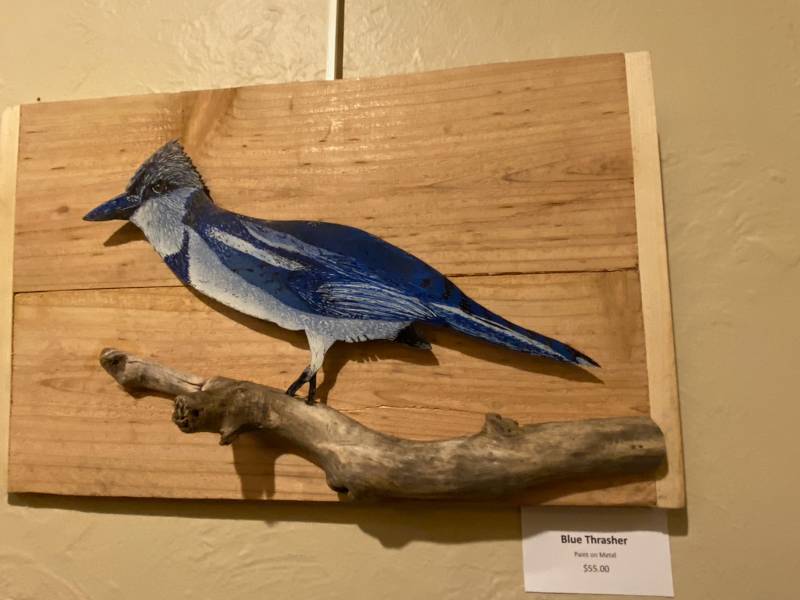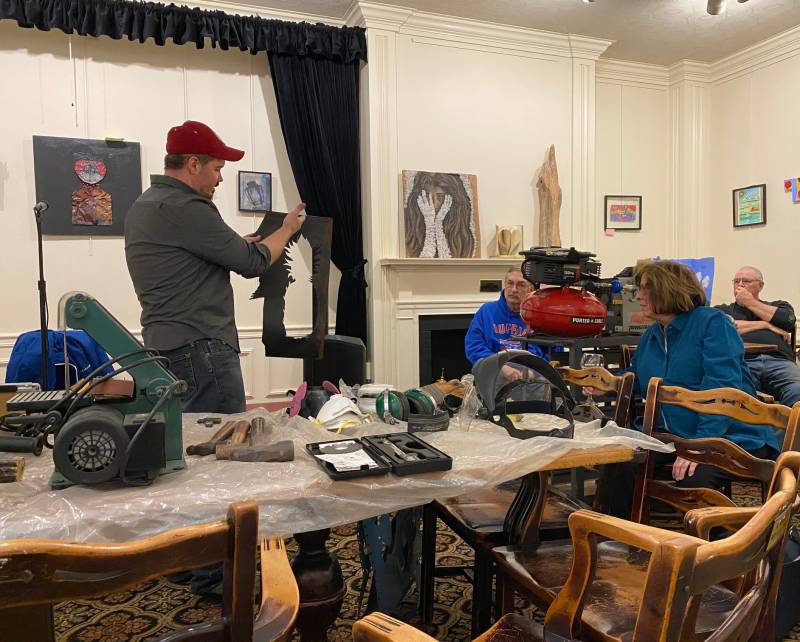
Photo by Joanne Beck
Of the sundry tools that artists gravitate toward, from chalk and colored pencils to watercolor and acrylic paints and brushes, Bryan Wright has chosen a lesser-known and more expensive pursuit.
Wright, a Batavia resident who was first introduced to his ever-increasingly favorite method to create art during a BOCES basic-advanced welding class 15 years ago, has fallen for the plasma cutter.
"I got this machine in 2008. I made mostly Christmas gifts for family and have been making things for people, I was just kind of giving a lot of the stuff away,” Wright said to a group of about 15 people that attended his Batavia Society of Artists talk Tuesday evening at GO Art! in Batavia. “So, just this last year, I've started putting stuff in exhibits and trying to make some money, because this is not cheap. It's not cheap.”
He made a major investment with his first plasma cutter — a heavy-duty welding torch that can cut through steel, aluminum, and similar materials with precision — for $1,000, and said that related supplies of a cap and electrodes go for $10 and $15 each, respectively.
Parts of the torch include the electrodes, a narrow piece of copper that receives the electrical current, a retaining cap, and a shield cap. Batavia Society of Artists hosted him for a demonstration that didn’t pan out due to the cold, snow, and wind, Teresa Tamfer said.
He instead offered a video that illustrated what he did and how he did it, followed by a question and answer session with many of his supplies and pieces of equipment on hand.
An audience member asked how long his materials last.
"So what I have found is that it's really up to you to determine when you think you need to replace this. But I would probably say, I could probably go through … in a five pack, it probably maybe lasts like six or seven months, I don't know, maybe once a month you might go through a new set," he said. "But the problem that you have is when you don't have a new end and a new electrode, the cut is a little more dispersed, it's kind of, it's not a very clean, precise cut. And you just can't compare a used one to a brand-new one right out of the box. So you’ve really got to be picky and choosey on when you want to change this, and when is it appropriate to just need to make that change?
“If I'm cutting something purely on the outside, it really doesn't make a difference. But if you want to cut like an eyeball out or something in the middle, you really want to make sure that cut isn't just splattering out and kind of making a mess. So there's an appropriate time to replace it,” he said.
Other considerations are having a compressor, which goes "hand in hand" with the plasma cutter, and the height of the materials because that can distort your cutting line, he said.
“Because if you pull back, you're not really sending that amount of heat directly to that material. So if you're not back far enough, you're not really going to have a nice precise cut, but the closer you are to that material, you will get that nice cut,” he said.
Samples of his work are on display and available for purchase through March 30 in the 2.o.1 Tavern Gallery at GO Art!, 201 E. Main St., Batavia.
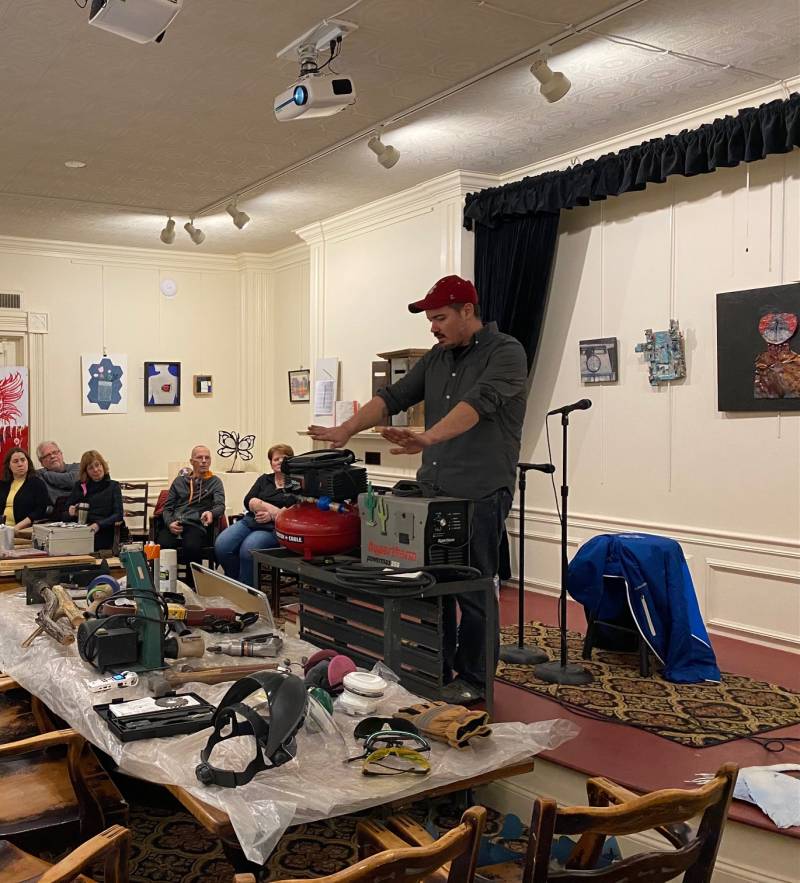
Photo by Joanne Beck
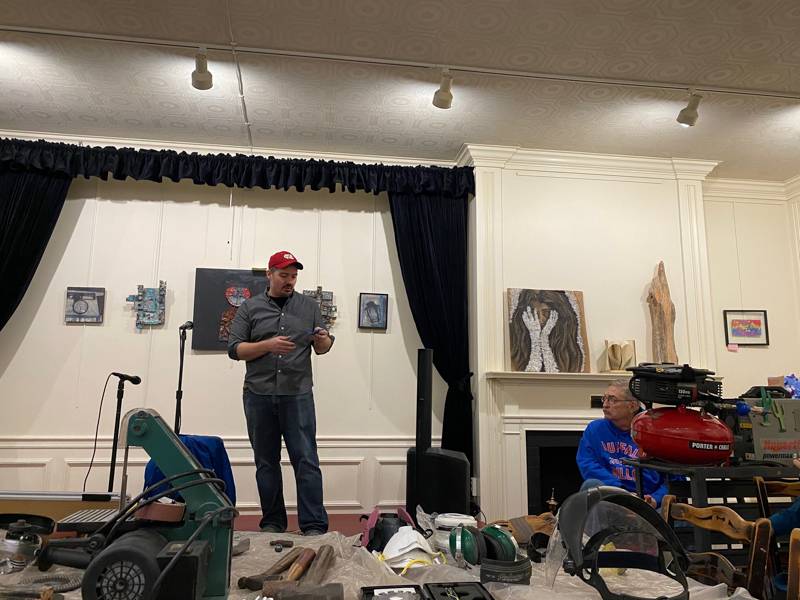
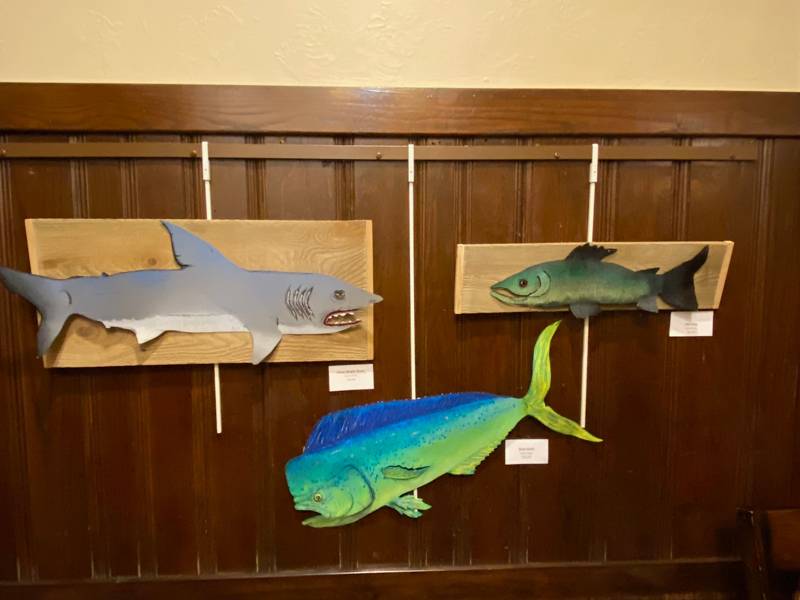
Photo by Joanne Beck
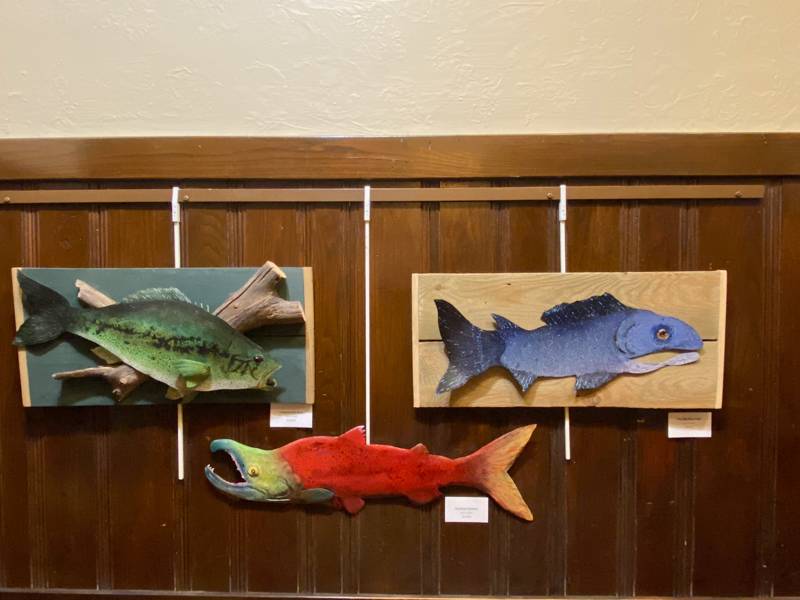
Photos by Joanne Beck
